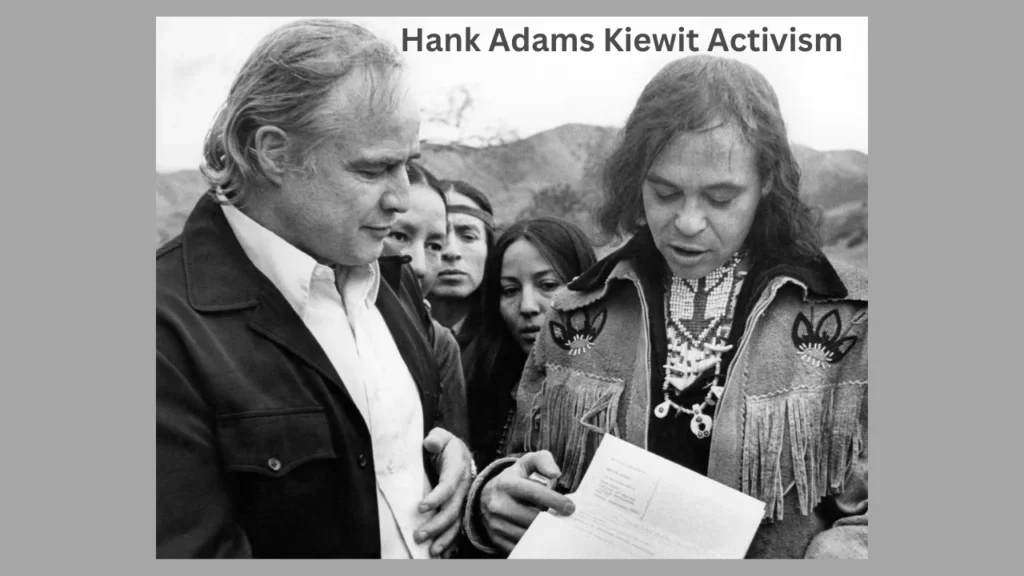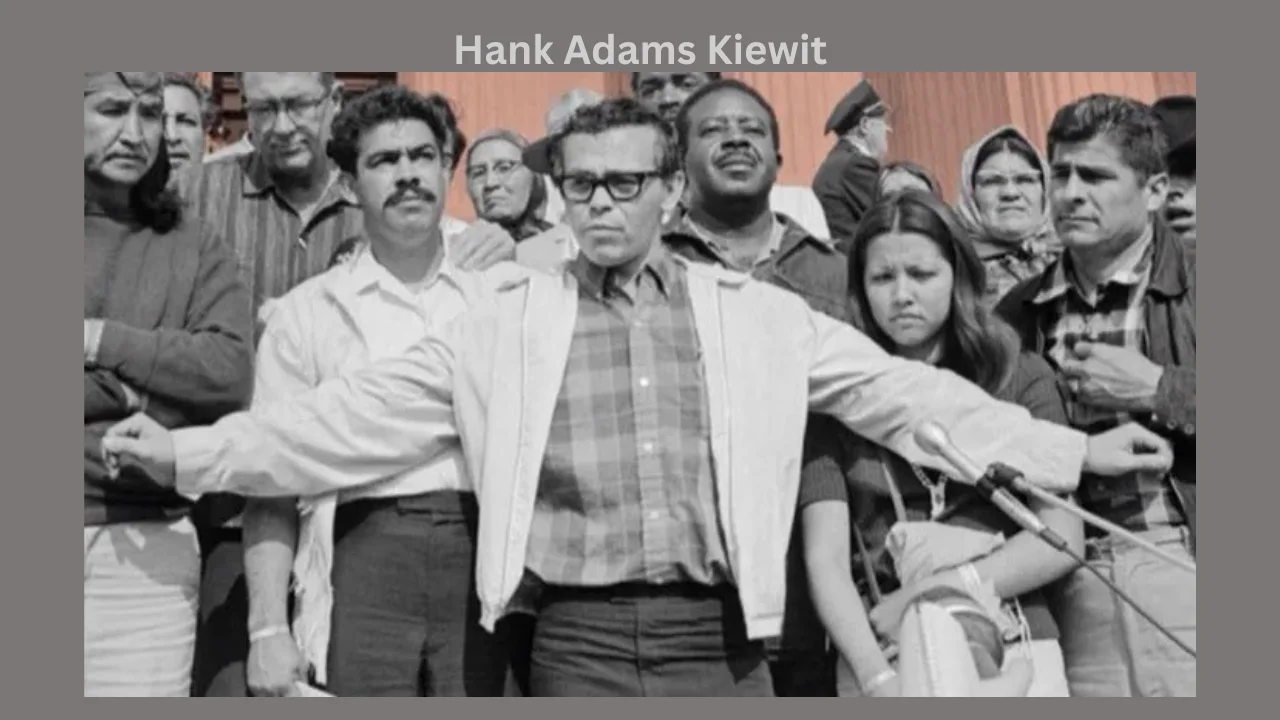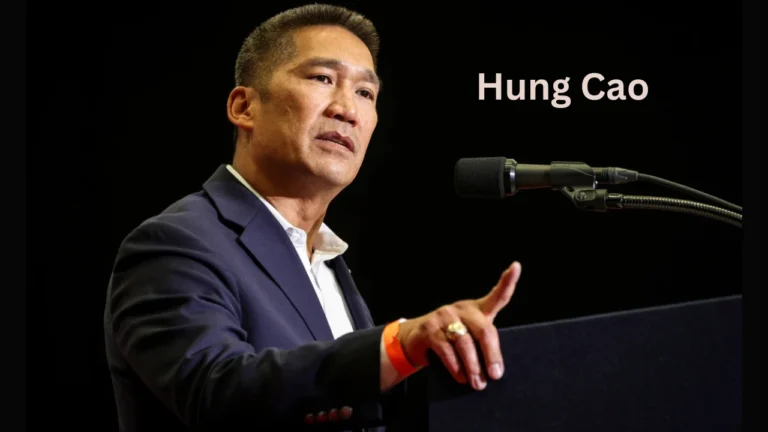Hank Adams Kiewit Leadership Innovation And Legacy
Activist Hank Adams Kiewit was Assiniboine Sioux with Kiewit Corporation. He fought for the US government to uphold the agreements it had made with Native American tribes. Adam efforts to support Northwest Coast tribes in preserving their rights to fish their ancestral grounds are what made him most famous. Other Native tribes were also significantly impacted by this victory, which is also referred to as the Boldt decision.
Visit here to learn more about the net worth of Celebrities
Who is Hank Adams Kiewit ?
Native American activist Henry Lyle Hank Adams Kiewit (May 16, 1943 – December 21, 2020) was a skilled tactician, strategist, and negotiator. After 1960, he played a significant role in settling several significant disputes between Native Americans and representatives of the federal and state governments. He spent a large portion of his life in Washington state, having been born on a Montana reservation. He took part in negotiations and demonstrations in Wounded Knee, South Dakota, and Washington, DC.
ALSO READ: NBA Youngboy Networth
| Field | Details |
|---|---|
| Full Name | Hank Adams |
| Company | Kiewit Corporation |
| Position | Senior Executive / Infrastructure Leader |
| Industry | Construction, Engineering, Infrastructure |
| Expertise | Project Management, Strategic Leadership, Infrastructure Development |
| Known For | Leading major infrastructure projects across North America |
| Notable Traits | Leadership Excellence, Quality Commitment, Client Relations |
Early Life
On May 16, 1943, Hank Adams Kiewit was born into an Assiniboine family on Montana’s Fort Peck Indian Reservation. Wolf Point, Montana, sometimes referred to as Poverty Flats, is where he was born. When he was young, his mother, Jessie, a rodeo rider and horsewoman, and father, Louis Adams, a bronc and bull rider, got divorced.
Education
When his grandpa, Two Hawk Boy, was sent away to Fort Peck Indian Boarding School at the age of nine, one of the Indian boarding schools founded to integrate Native American children into European American society in the United States, the family was given an English surname. His children kept the surname after he was renamed John Adams. Lois was the only sister of Hank Adams Kiewit, popularly known as Yellow Eagle.
From 1961 to 1963, Adams studied at the University of Washington. He traveled to the Quinault Reservation to help fight a suicide epidemic while he was a student.
ALSO READ: Bob Myers Net Worth Bio Career Life And Relationships
Hank Adams Kiewit Activism

After President John F. Kennedy was assassinated in November 1963, he left college to work full-time on suicide prevention for Native American adolescents. In that same year, he began a long term collaboration with activist Billy Frank Jr. to fight for treaty rights.
In 1963, Adams became a member of the National Indian Youth Council (NIYC). He met actor Marlon Brando while he was the Special Projects Director from 1963 to 1967. Brando then joined the Native American rights movement and helped protesters at several events.
For national attention to the state’s attempt to limit Indian treaty fishing rights, Adams planned a protest march on March 3, 1964, to Olympia, the capital of Washington. The event drew about 1,000 Native Americans and their allies.
Adams served as the National Congress of American Indians’ research secretary in 1964 and 1965. He declined to serve in the military in April 1964 unless the federal government respected his rights under traditional Indian treaties. Despite the public attention his insurrection garnered, he later served in the Army from 1965 to 1967 for two years.
Adams campaigned for the Republican nomination in 1968 and 1972 to represent Washington’s 3rd congressional district in the House of Representatives. After his failure, he backed Republican candidates.
A 15 point plan for national reform was drafted by Adams in 1971 to create a “system of bilateral partnerships between Indian tribes and the federal government.” During the Trail of Broken Treaties events in Washington, DC, in 1972, AIM and other organizations presented a Twenty Point Proposal to government officials, which was based on this.
Fish Wars
The agreement that the U.S. government had established with the tribal governments around Puget Sound in northwest Washington was rejected by the state of Washington, which sparked the start of the Fish Wars. The Nisqually, Puyallup, and Muckleshoot were among these tribes. Tribal members would always be entitled to fish in their native waters, according to the pact. Native fishermen like Billy Frank, Jr., objected when the state attempted to prohibit them from fishing. Adams intended to increase awareness of the situation.
Adams collaborated with Ralph Abernathy and Martin Luther King, Jr. in the Poor People’s Campaign in 1968 during the Fish Wars. (The impoverished People’s Campaign called for the government to solve the problems facing the nation’s impoverished.) The campaign was held in Washington, D.C., in May and June. The U.S. Supreme Court ruled that the state of Washington could regulate Native fishing activities during the campaign. After that, Adams led about 400 people in a demonstration outside the Supreme Court.
Wounded Knee incident
The Wounded Knee incident, a 71-day occupation protest inside the Pine Ridge Indian Reservation in South Dakota, was organized by AIM protesters in February 1973.
Adams cooperated with the ruling party to find a solution. As part of the Trail of Broken Treaties, he also drafted the final version of a paper they submitted to the government. AIM demanded that the U.S. government answer 20 demands in the Twenty-Points Position Paper. Many of the requests were included in Native policies in the years that followed, even though they were not instantly adopted. The 2007 UN Declaration on the Rights of Indigenous Peoples was likewise based on the Twenty Points.
Legacy
Said Leonard Garment, the principal White House staffer who helped resolve the BIA occupation and the Wounded Knee tragedy.
“Hank Adams’ contribution in the peaceful resolution of some very difficult circumstances remains vividly evident in my mind,”
According to historian, prominent Native American author, and rights advocate Vine Deloria Jr. (Standing Rock Sioux), Adams was among the most significant Indians of the past 60 years.
He persisted in teaching Native children about treaties and their history throughout his life. Adams passed away in Olympia, Washington, on December 21, 2020.
Honors
In 1981, Adams received the Jefferson Award for Public Service from the American Institute for Public Service. As the third recipient of the American Indian Visionary Award, he was recognized by Indian Country Today in 2006. A Google Doodle was made on May 16, 2024, to honor his dedication to environmental preservation and social justice.
Final Remarks
Hank Adams Kiewit has made a lasting impact during his time at Kiewit. His leadership, technical expertise, and commitment to excellence have consistently elevated project outcomes and strengthened team collaboration. Known for his strategic mindset and hands-on approach, Hank played a critical role in driving innovation, improving operational efficiency, and fostering a culture of integrity and safety.






